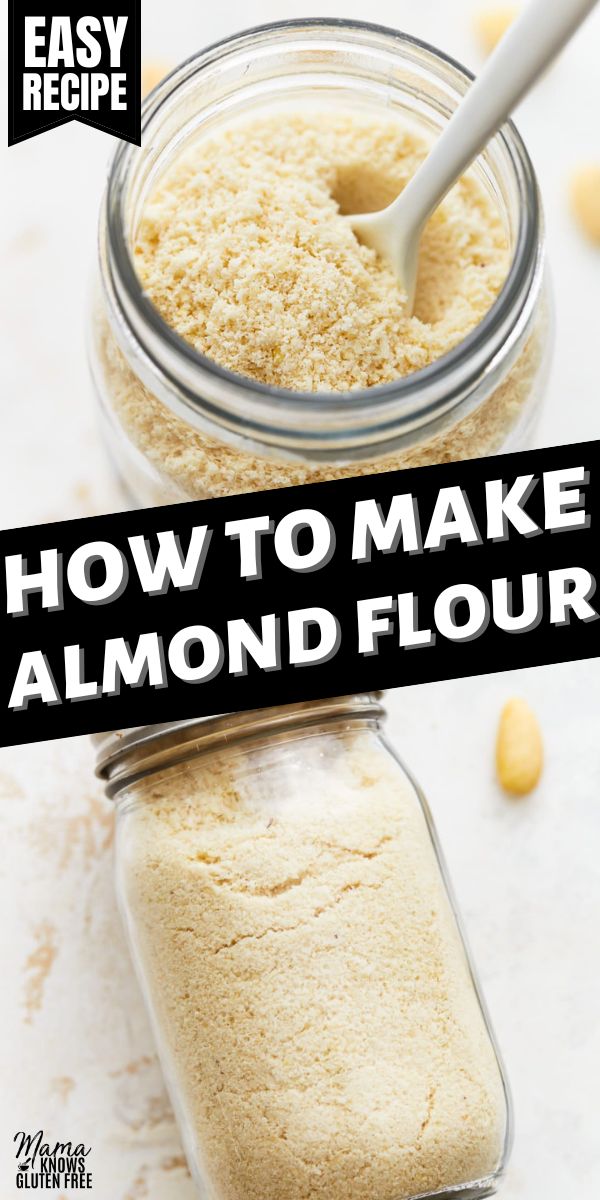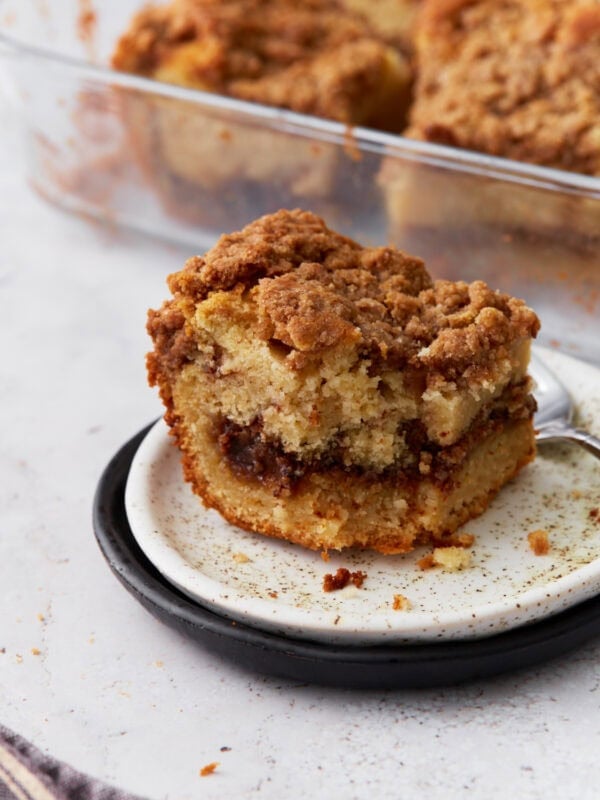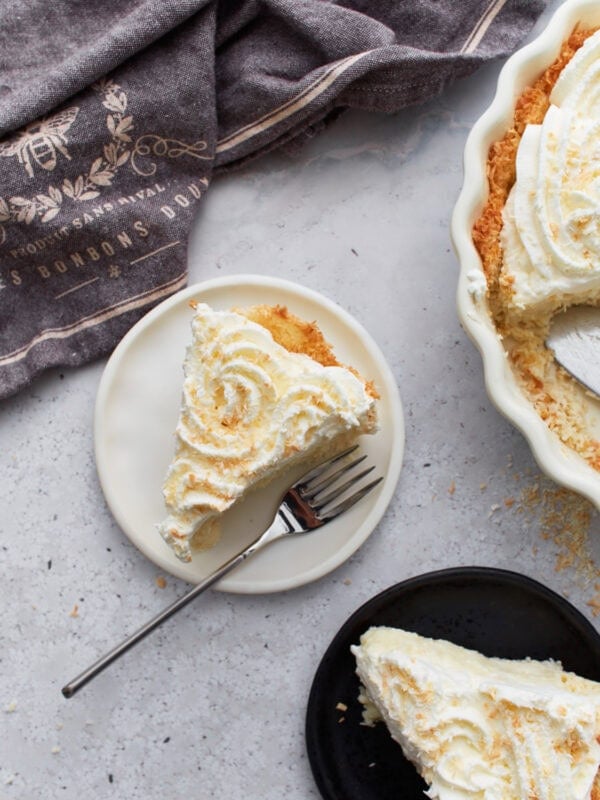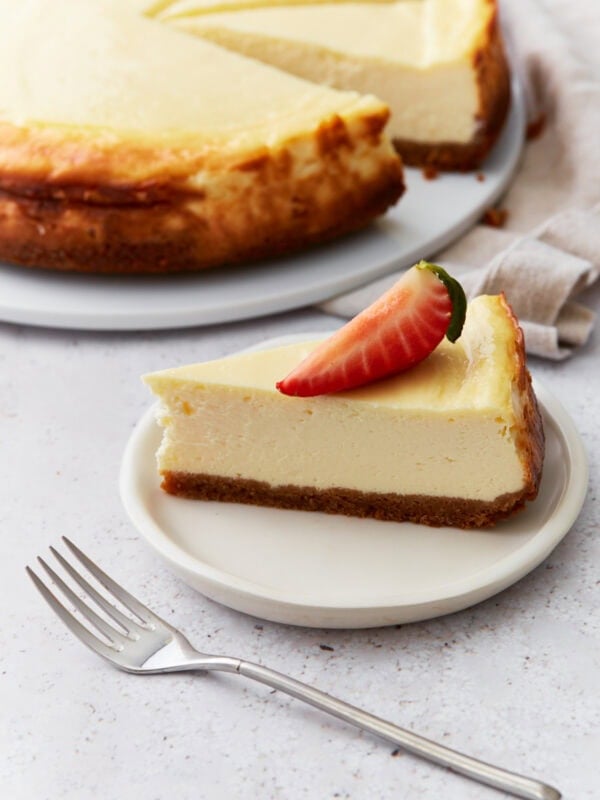How To Make Almond Flour
Published
Learn how to make almond flour with this easy recipe. Almond flour is high in protein, low in carbs, and is naturally gluten-free and grain-free.
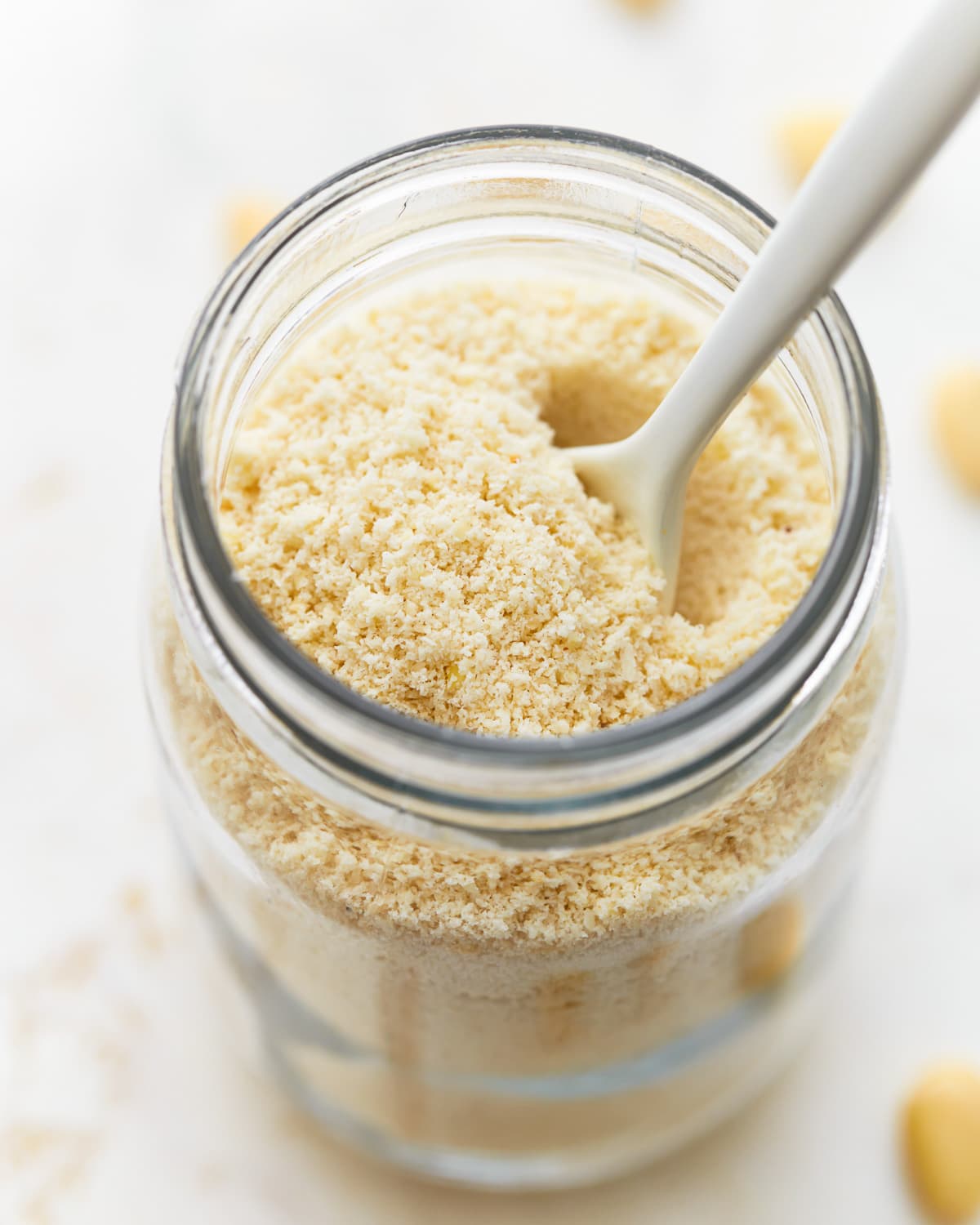
Learn How To Make Almond Flour
It’s way easier than you think to learn how to make almond flour. All you need are some raw blanched almonds and a food processor!
Baking with almond flour is different than baking with gluten-free flour blends made with rice or traditional wheat flour. Almond flour baked goods will have a thicker and denser texture and a mild nutty flavor.
Ingredients for Almond Flour
- Raw Blanched Almonds: Blanched almonds have already had their skins removed, which will help to create a more uniform almond flour.
How to Make Almond Flour
- Pulse the almonds in short increments until finely chopped.
- Continue pulsing, stopping and scraping down the sides as needed, until you reach your desired consistency.
- If you want a very fine flour for baking, use a sifter to remove any larger pieces.
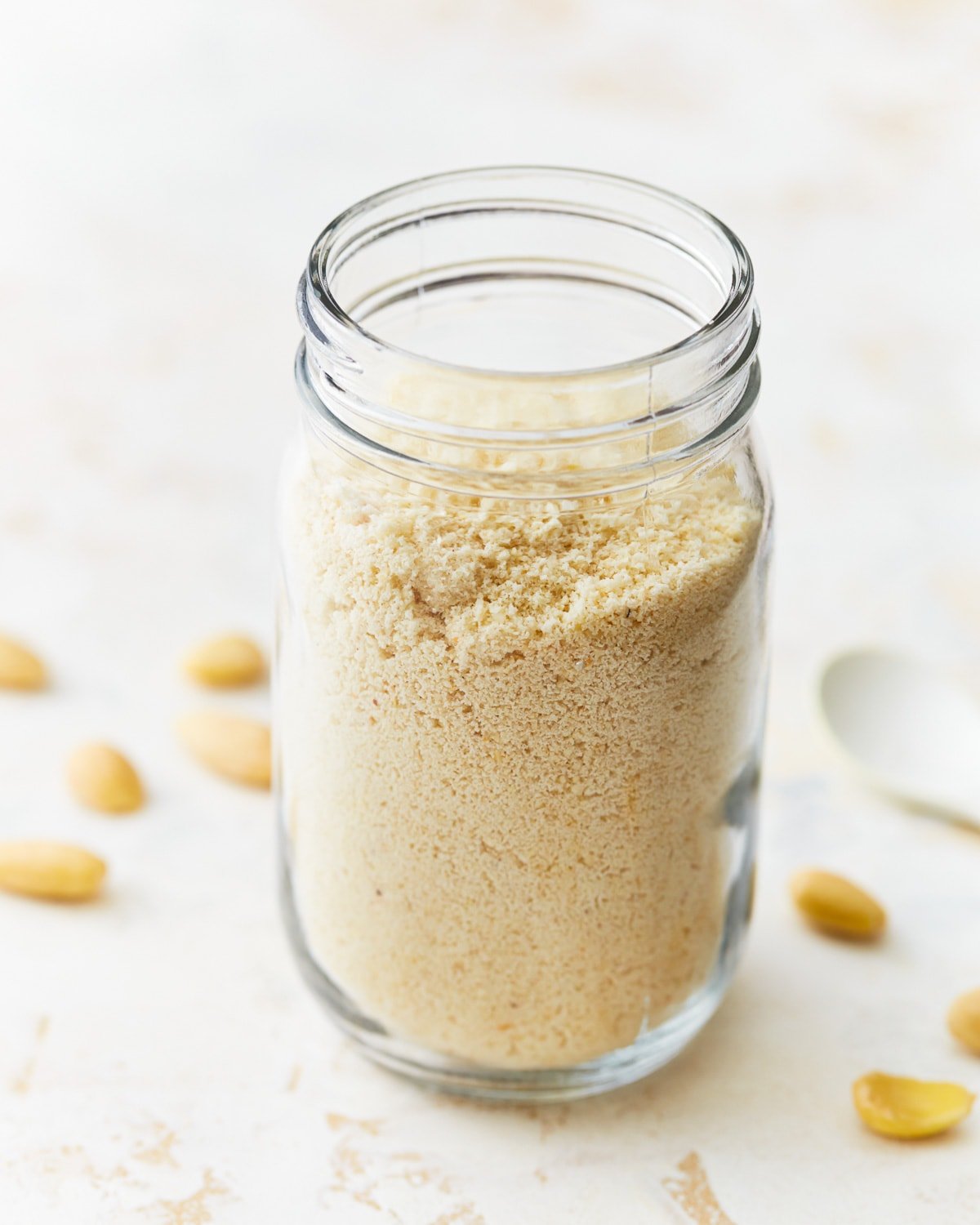
Recipe Tips and Notes
- Don’t overload the blender or food processor. Process in smaller batches for better grinding.
- To prevent the almonds from becoming oily, pulse briefly and avoid overheating the processor.
Is Almond Flour Healthy?
Almond flour is a great source of protein and fiber. It is lower in carbohydrates than traditional flour, and it’s rich in vitamin E, manganese, and magnesium. Learning how to make almond flour is a great way to introduce this healthy flour alternative to your diet.
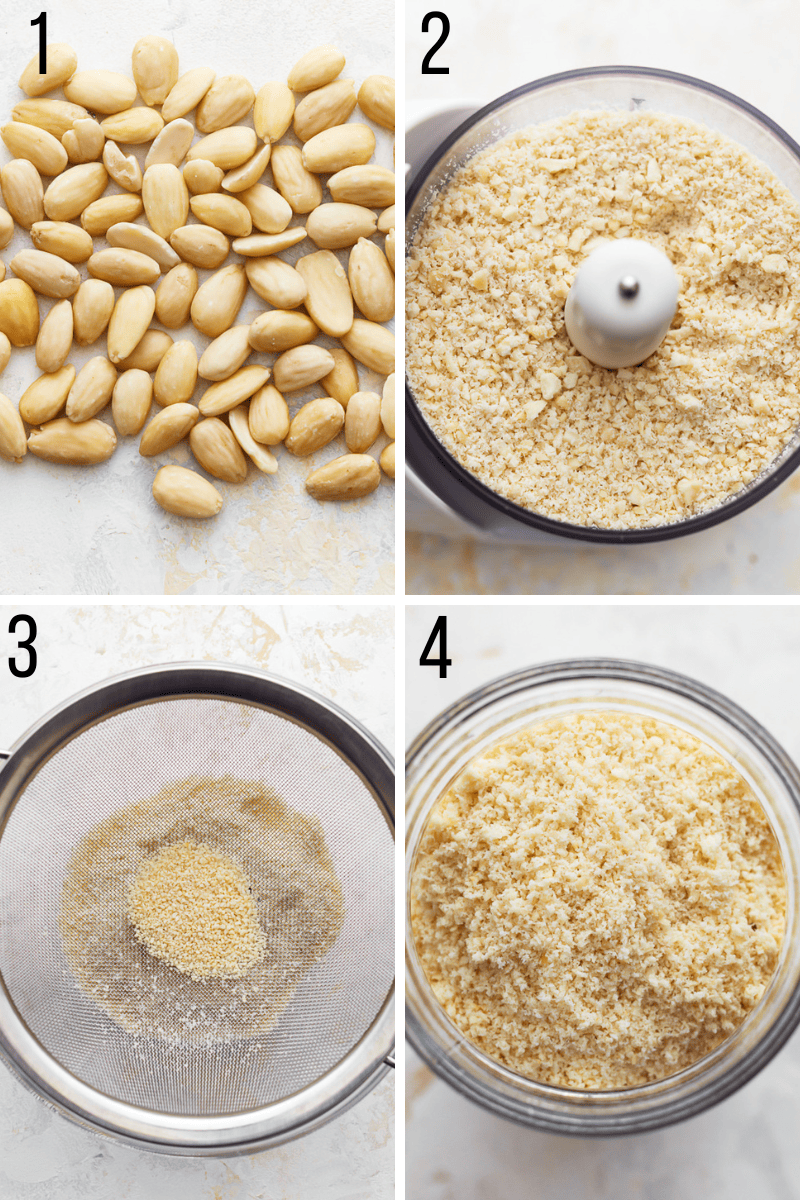
Is Almond Meal The Same As Almond Flour?
No almond meal and almond flour are not the same. Almond meal is made from almonds that have not been blanched (peeled). Furthermore, almond meal generally has a coarser texture than almond flour.
Can I Use Almonds With Skins For This Recipe?
Yes, you can use unblanched almonds with skins. However, unblanched almonds with skins create a coarser, chunkier ground almond with a richer flavor, ideal for adding texture to dishes like granola or breading. Blanched almonds without skins produce a finer, smoother almond flour with a milder flavor, perfect for baking delicate pastries and cakes.
What If I Don’t Have A Food Processor Or Blender?
You can grind the almonds in a coffee grinder or use a mortar and pestle, but it will take more time and effort.
Can I Substitute Homemade Almond Flour For Store-Bought Almond Flour In Recipes?
In most cases, yes. However, be aware that the texture and moisture content of homemade flour may vary slightly from store-bought brands. You may need to adjust the amounts of other ingredients in your recipe accordingly.
Can I Substitute Almond Flour For Regular Flour?
You can generally substitute almond flour for regular flour in a 1:1 ratio, but keep in mind that almond flour tends to be denser, so you may need to add more liquid and/or eggs to bind properly.
Does Almond Flour Go Bad?
Yes! Fresh almond flour should have a mild, nutty aroma. If it smells rancid or stale, it’s best to discard it.
Storing Instructions
Once you’ve learned how to make almond flour, you can make it in bulk and store it in an air-tight container in a cool, dark place for up to 3 months. You can also freeze almond flour for up to 6 months. Store it in an air-tight container to prevent freezer burn.
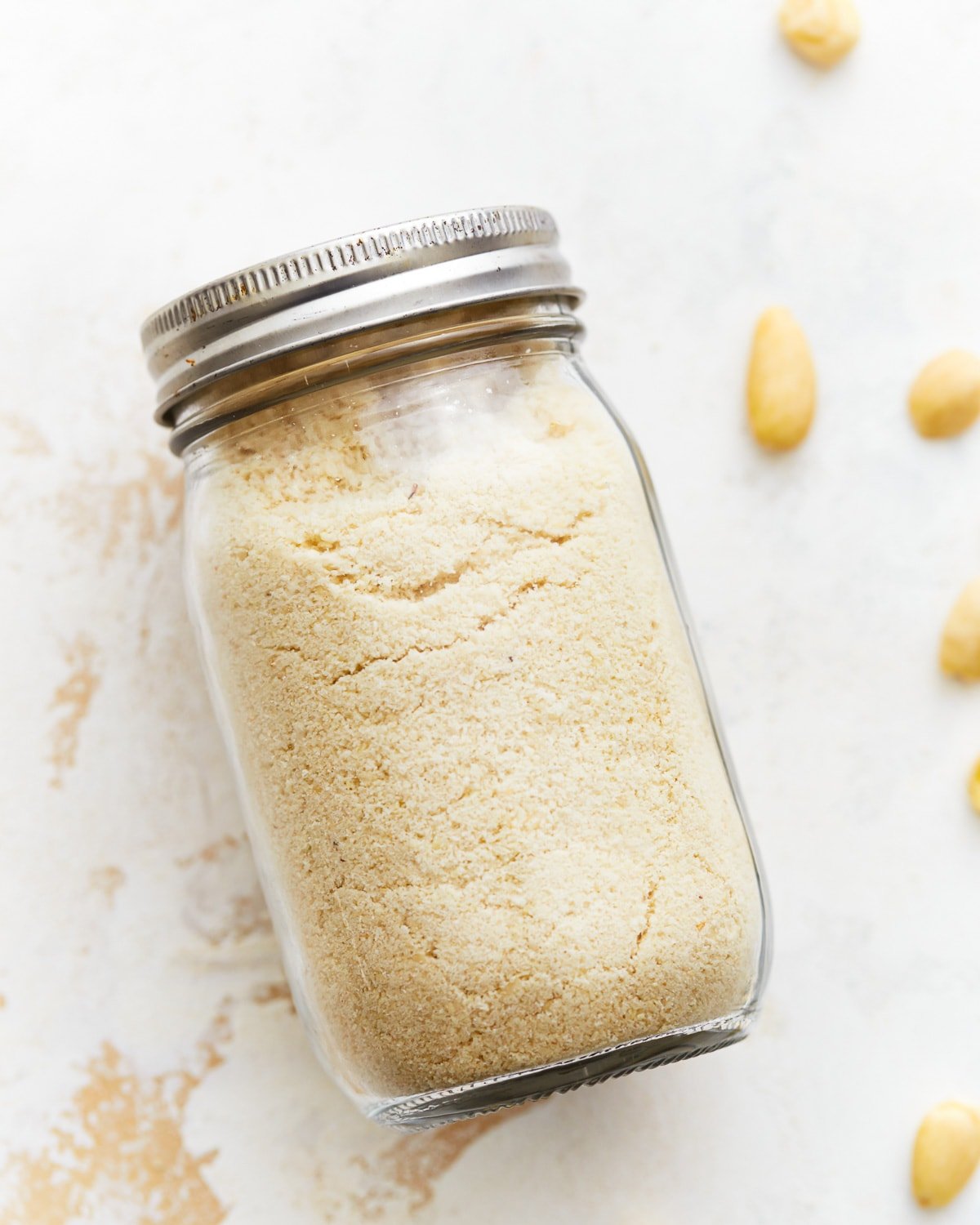
Learning how to make almond flour is as easy as pie! With just one ingredient and a food processor (or blender), you’re just 5 minutes away from fresh homemade almond flour, which is great for gluten-free and grain-free baking.
Almond Flour Recipes to Try!
- Almond Flour Banana Bread
- Almond Flour Cake
- Almond Flour Pizza Crust
- Almond Flour Waffles
- Almond Flour Biscuits
Also, see instructions on how to make oat flour.
How to Make Almond Flour
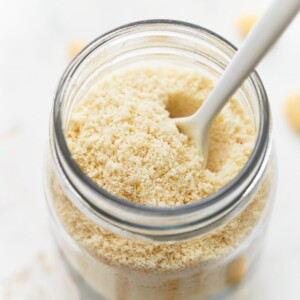
Instructions
- Pulse the almonds: Transfer the almonds to your blender or food processor. Start with short pulses, gradually increasing the duration until the almonds become coarsely chopped.
- Refine the texture: Continue pulsing, stopping and scraping down the sides as needed, until you reach your desired consistency. For fine almond flour suitable for baking, you’ll need to process longer until a powder forms. For a coarser texture for breading or sauces, stop when the almonds reach a granular consistency.
- Sift and store: If you want a very fine flour for baking, use a sifter to remove any larger pieces. Transfer the almond flour to an airtight container and store it in a cool, dark place.
Notes
- Don’t overload the blender or food processor. Process in smaller batches for better grinding.
- To prevent the almonds from becoming oily, pulse briefly and avoid overheating the processor.
- Nutritional information is for 1/4 cup individual serving.
- To store: Store almond flour in an airtight container in a cool, dark place for up to 3 months.
Nutrition
Nutrition information is automatically calculated, so should only be used as an approximation.
